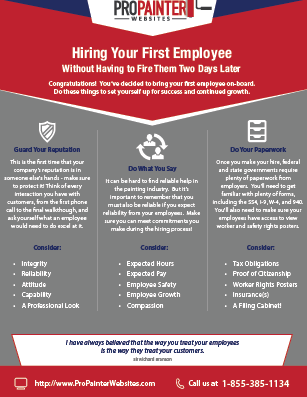Understand How Seasonal Problems Affect The Success Of Commercial Outside Painting And Learn The Ideal Durations To Assure Long-Lasting Outcomes For Your Job
Understand How Seasonal Problems Affect The Success Of Commercial Outside Painting And Learn The Ideal Durations To Assure Long-Lasting Outcomes For Your Job
Blog Article
Staff Author-Fox Skafte
When you're planning an industrial exterior painting task, seasonal elements can make or damage your results. You'll want to consider exactly how temperature level and humidity effect paint application and drying out times. Selecting the appropriate season can guarantee your paint sticks effectively and lasts much longer. However which seasons are genuinely the very best for this kind of job? Allow's discover mouse click the following webpage that can affect your task's success.
The Impact of Temperature Level on Paint Application
When you're intending an industrial external painting task, the temperature can dramatically affect just how well the paint sticks and dries out.
Preferably, you intend to repaint when temperatures range in between 50 ° F and 85 ° F. If it's too chilly, the paint may not heal correctly, bring about concerns like peeling off or fracturing.
On the flip side, if it's also hot, the paint can dry also quickly, preventing correct bond and leading to an uneven surface.
You must additionally take into consideration the moment of day; morning or late afternoon uses cooler temperatures, which can be a lot more desirable.
Always inspect the manufacturer's recommendations for the particular paint you're using, as they frequently offer support on the optimal temperature level array for optimal results.
Humidity and Its Effect on Drying Times
Temperature isn't the only environmental variable that influences your commercial external paint job; moisture plays a considerable function also. High humidity degrees can decrease drying times dramatically, affecting the total quality of your paint work.
When the air is filled with moisture, the paint takes longer to heal, which can lead to concerns like bad bond and a greater risk of mildew growth. If you're painting on an especially humid day, be gotten ready for prolonged wait times between layers.
It's critical to monitor regional weather and plan appropriately. Ideally, aim for humidity degrees between 40% and 70% for optimum drying.
Keeping these factors in mind ensures your project remains on track and delivers a long-term finish.
Best Seasons for Commercial Exterior Painting Projects
What's the best season for your industrial outside painting jobs?
Spring and early autumn are typically your best choices. During commercial painters contractors near me , temperatures are mild, and humidity levels are often reduced, creating optimal problems for paint application and drying out.
Avoid summer season's intense heat, which can cause paint to completely dry too promptly, leading to poor bond and coating. Similarly, winter season's chilly temperature levels can hinder appropriate drying and curing, running the risk of the durability of your paint task.
Aim for days with temperature levels in between 50 ° F and 85 ° F for optimum outcomes. Bear in mind to examine the regional weather report for rain, as wet conditions can spoil your job.
Planning around these elements guarantees your painting task runs smoothly and lasts much longer.
Verdict
Finally, planning your business external paint projects around seasonal considerations can make a significant distinction in the end result. By organizing job during the ideal temperatures and humidity levels, you'll make sure better adhesion and drying times. Keep in mind to keep an eye on regional weather prediction and choose the right time of year-- spring and very early autumn are your best choices. Taking these actions will aid you attain a sturdy and specialist coating that lasts.
